We have seen how one can access the Startup Settings in Windows via the Advanced Boot Menu Options in Windows 8 or Advanced Startup Options in Windows 11/10. You can also hold down the Shift key and then click Restart from the Power button to see the boot option. But then. you will have to click a couple of times before you will be taken to the Startup Settings, as shown below.
In this post, we will see how to boot into legacy Windows Boot Manager, display Startup Settings & then boot straight into Safe Mode automatically using the F8 key in Windows 11/10.
Since Windows 11/10 has reduced the F2 and F8 time periods to almost negligible intervals, many times, it becomes difficult to boot into Safe Mode, by pressing F8 during boot time. Using this tip, one can display the Startup Settings and then press F8.
Read: How to change BIOS Mode from Legacy to UEFI in Windows 11
Display Startup Settings on Boot in Windows 11/10
Open the WinX menu and select Command Prompt (Admin). Type the following and hit Enter:
bcdedit /set {bootmgr} displaybootmenu yes
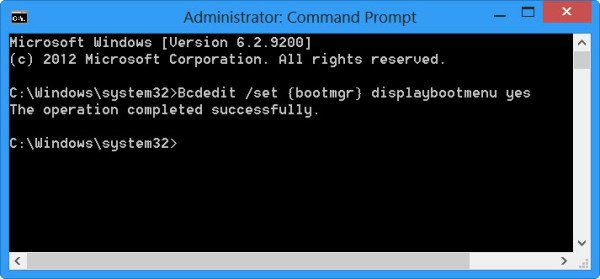
You will get a confirmation stating that The operation completed successfully.
Now restart your Windows PC. You will see the following screen. The operating systems installed on your PC will be displayed.
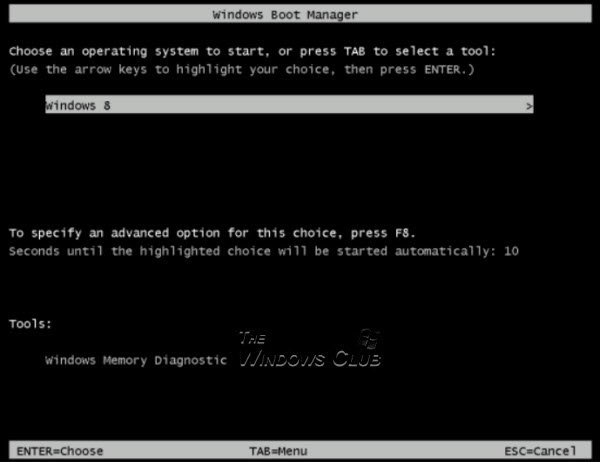
Click on F8 now to see the Advanced Startup Options for this operating system. You will be able to see the following screen showing the Startup Settings options.
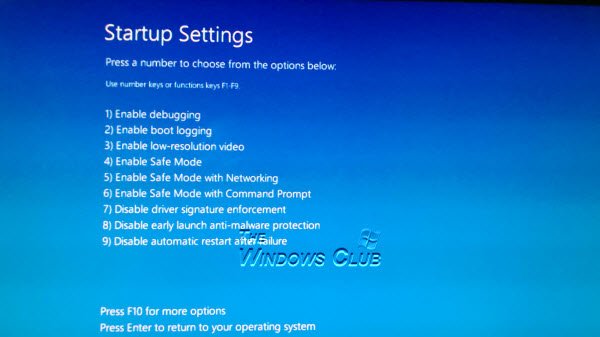
- Enable Debugging. Starts Windows in advanced troubleshooting mode
- Enable Boot Logging. This logs a file, ntbtlog.txt and lists the drivers that are installed during startup
- Enable low-resolution video. Starts Windows with current video driver & using low resolution (640×480) & refresh rate settings
- Enable Safe Mode. Starts Windows with a minimal set of drivers & services
- Enable Safe Mode with Networking. Starts Windows in safe mode with ability to access the Internet or other computers on your network
- Enable Safe Mode with Command Prompt. Starts Windows in safe mode with CMD
- Disable driver signature enforcement. Allows drivers containing improper signatures to be installed
- Disable early launch antimalware protection. Prevents early launch antimalware driver from starting
- Disable automatic restart after failure. Prevents Windows from automatically restarting, if a Stop Error causes Windows to crash.
To see more options, press F10. You will be able to see the available options for your system.
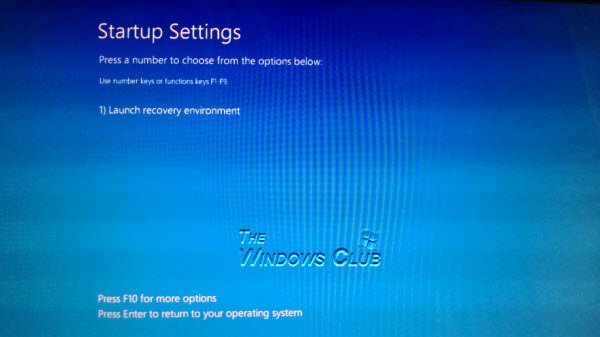
In my case, you could see:
- Launch recovery environment. Launches recovery options.
Thus, you can see that you can carry out a lot of important tasks by accessing the Startup Settings in Windows. Using the Windows Startup Settings, you can also boot into Safe Mode easily, should you need to.
Pressing Enter, will return you back to your Windows operating system.
Read: How to Enable or disable Windows Boot Manager
To stop displaying the Windows Boot Manager, type the following command in CMD (Admin) and hit Enter:
bcdedit /set {bootmgr} displaybootmenu no
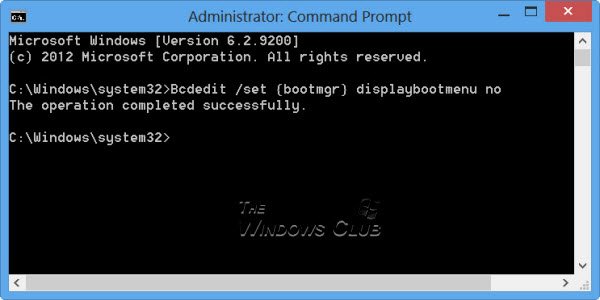
You will now be able to boot directly to your Windows 11/10 sign-in screen, when you restart the computer.
You can also enable F8 key & boot into Windows Safe Mode.
Tip: In Windows 95, when you held down Shift and clicked Restart, your Windows would restart without restarting your computer. Now when you do this in Windows 11/10, you see the Boot Options.
Read next: Boot Windows directly to the Advanced Startup Options screen.




The same command is used to both display the menu and disable it. One must be wrong.
Thanks for pointing out the typo. Edited. :)
The screen goes black after pressing f8 for advanced options and does nothing.
I put in bcdedit /set {bootmgr} displaybootmenu yes” it worked. It shows the menu for a sit second then it just continues to go in the boot loop again